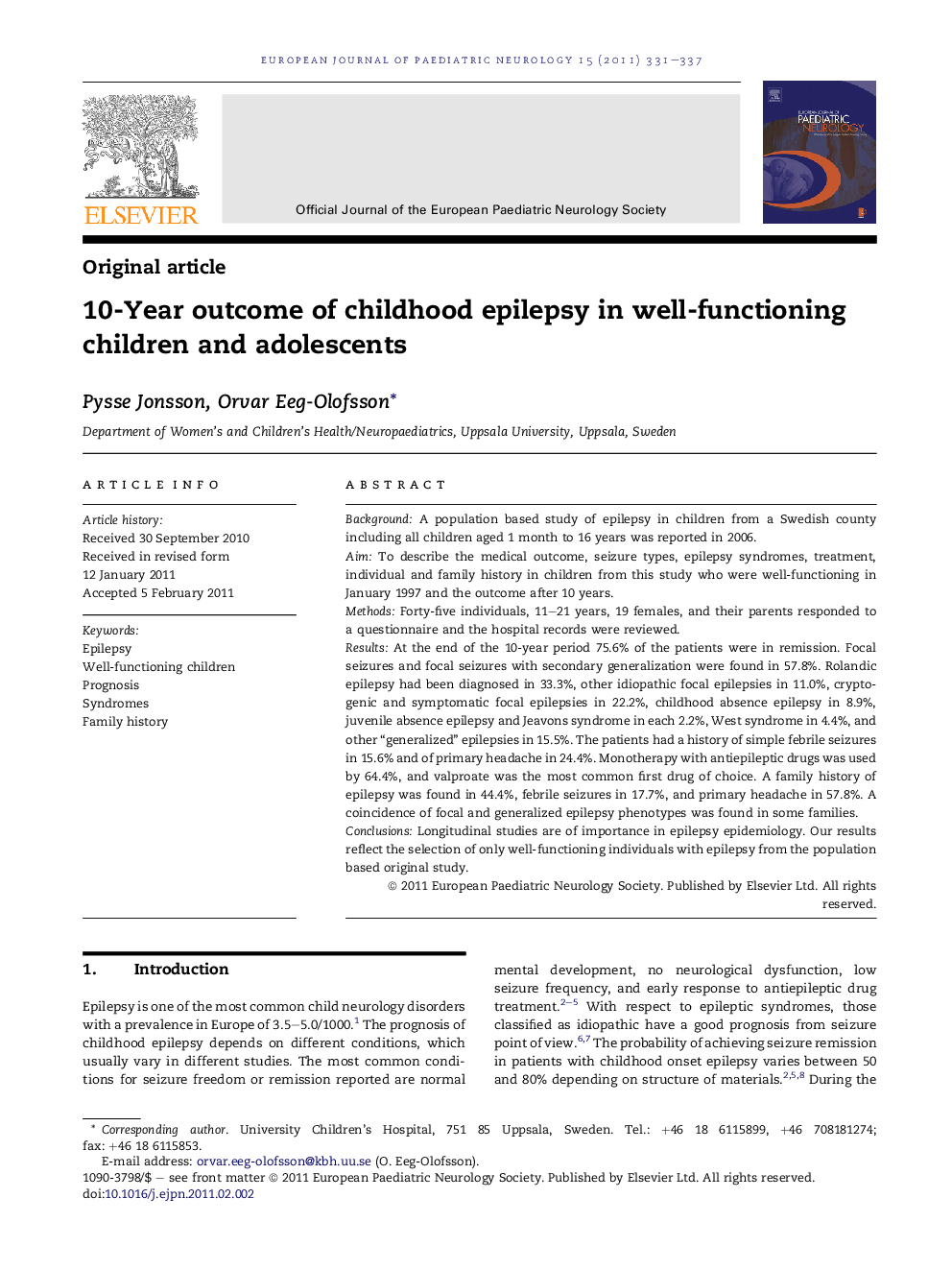| Article ID | Journal | Published Year | Pages | File Type |
|---|---|---|---|---|
| 3054454 | European Journal of Paediatric Neurology | 2011 | 7 Pages |
BackgroundA population based study of epilepsy in children from a Swedish county including all children aged 1 month to 16 years was reported in 2006.AimTo describe the medical outcome, seizure types, epilepsy syndromes, treatment, individual and family history in children from this study who were well-functioning in January 1997 and the outcome after 10 years.MethodsForty-five individuals, 11–21 years, 19 females, and their parents responded to a questionnaire and the hospital records were reviewed.ResultsAt the end of the 10-year period 75.6% of the patients were in remission. Focal seizures and focal seizures with secondary generalization were found in 57.8%. Rolandic epilepsy had been diagnosed in 33.3%, other idiopathic focal epilepsies in 11.0%, cryptogenic and symptomatic focal epilepsies in 22.2%, childhood absence epilepsy in 8.9%, juvenile absence epilepsy and Jeavons syndrome in each 2.2%, West syndrome in 4.4%, and other “generalized” epilepsies in 15.5%. The patients had a history of simple febrile seizures in 15.6% and of primary headache in 24.4%. Monotherapy with antiepileptic drugs was used by 64.4%, and valproate was the most common first drug of choice. A family history of epilepsy was found in 44.4%, febrile seizures in 17.7%, and primary headache in 57.8%. A coincidence of focal and generalized epilepsy phenotypes was found in some families.ConclusionsLongitudinal studies are of importance in epilepsy epidemiology. Our results reflect the selection of only well-functioning individuals with epilepsy from the population based original study.
